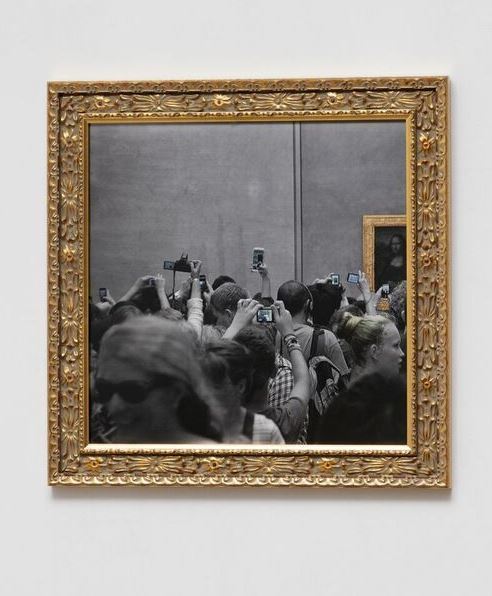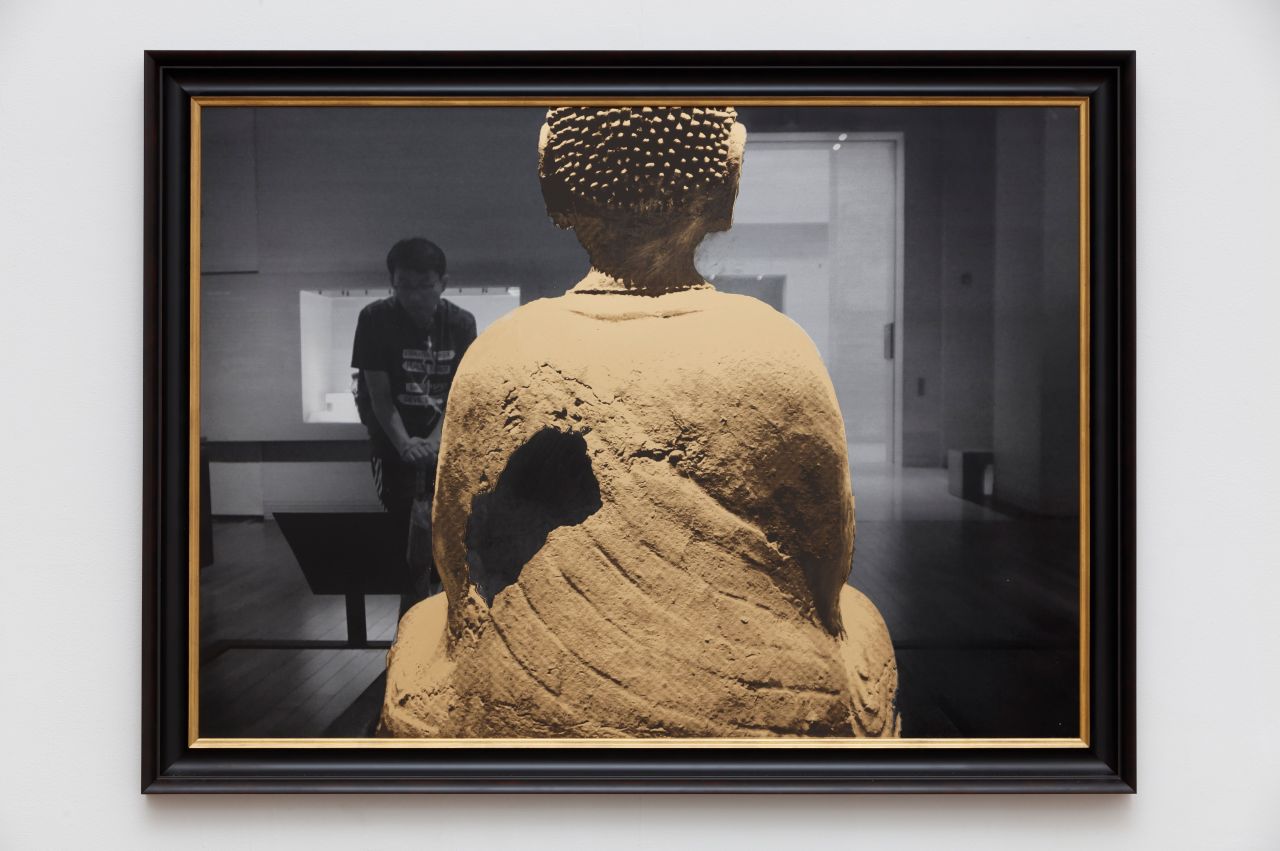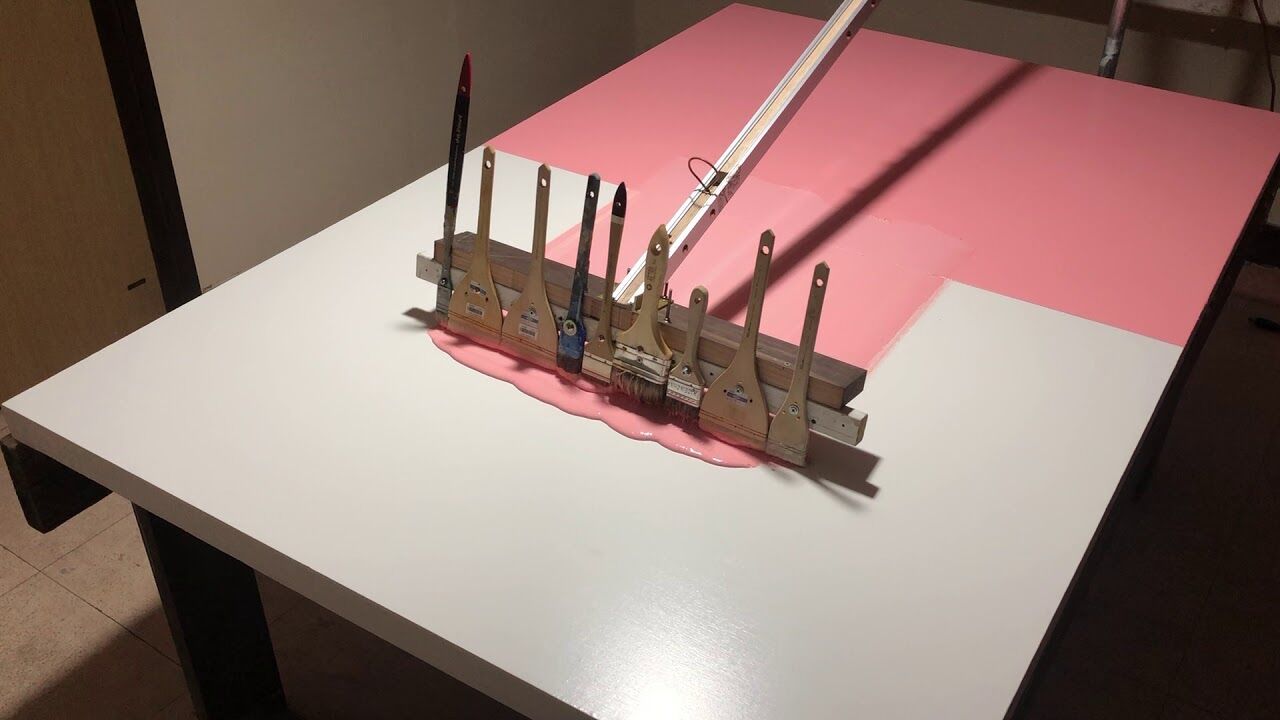To things that we find ambivalent, inconsistent
Seoul exhibition raises questions about what makes a masterpiece
By Shim Woo-hyunPublished : Aug. 22, 2019 - 17:09
Confusion has recently followed after the relocation of “Mona Lisa,” as it created bottlenecks of visitors coming to see Leonardo da Vinci’s most widely known masterpiece.
To what end do people toil all the way to see the artwork? Why is it that “Mona Lisa” gets the spotlight while masterpieces by Peter Paul Rubens that hang on the wall behind it do not get attention they rightfully deserve?
Local artist Kim Hong-shik’s works shown at Gallery Su’s exhibition space have specifically started posing such questions, on why people are drawn to pieces that are deemed to have historical significance by the general public.
To what end do people toil all the way to see the artwork? Why is it that “Mona Lisa” gets the spotlight while masterpieces by Peter Paul Rubens that hang on the wall behind it do not get attention they rightfully deserve?
Local artist Kim Hong-shik’s works shown at Gallery Su’s exhibition space have specifically started posing such questions, on why people are drawn to pieces that are deemed to have historical significance by the general public.

Gallery Su is holding a group exhibition that introduces the artwork of Kim Hong-shik, Han Jin-su and Russian art group Bluesoup, under the title of “Ambivalently Yours” -- a twist on the letter closing “sincerely yours.”
The works at the exhibition present different kinds of ambivalences and inconsistences that we find in our own lives.
“I started this series in 2013, and the very first piece was the one that has ‘Mona Lisa,’” Kim said in explaining her piece shown on the second floor of the gallery space located in the Samcheong area of Seoul.
“I visited the Louvre in 2013. When I arrived in the room that houses ‘Mona Lisa,’ I found a train of people taking photographs and then moving right ahead. ‘Marriage at Cana,’ the largest painting at the museum shown on the other side of the room, stood like a folding screen that visitors seem to pay little attention to,” Kim recalled of her first visit to the Louvre in Paris.
Kim said there she tried to understand why people are so frantic about historical masterpieces, such as “Mona Lisa” and the sculpture Nike of Samothrace.
“I wondered if it is just the popularity or authenticity of the artworks that attracts masses of people. I was curious about what or who is to impose such importance on them.”
Kim’s works use photographs that have captured the scenes at the Louvre and the Orsay Museum blocks away, mostly of crowds taking pictures of world-famous works.
Kim has printed those photos on stainless steel and corroded them to add a golden hue. She also has put her paintings in golden frames.

On the opposite side of the wall, Kim has another series that consists of photographs of the same nature as the shots she got from the National Museum of Korea, the Ewha Womans University Museum and Whanki Museum.
Han’s works shown on the first floor also seem to question the value in works of art that often is taken for granted.
Han’s low-tech machines called “Action Painting” untiringly move their arms up and down. The arms, equipped with brushes, laboriously deploy acrylic paint on canvas to create what appears to be famous monochrome paintings.
Without the presence of machines, it is difficult to say if the paintings hung on the walls are created by an artist or motor-equipped metal assemblage.

“I prefer using low-tech machinery over high-tech, which will always offer you calculated precision. With low-tech, it is difficult to predict what you will have at the end, and I like that,” Han said.
Han’s installation on the second floor, “Liquid Memory,” also uses low-tech machinery. Ornamented with objects he found here and there, in constantly moves, though in slightly different directions.
The artist said he made the piece thinking about childhood memories of hanging out by the Han River on hot summer days.
Han explained that most of his works are not permanent. He uses found objects, breaks them down and reassembles them for other works, if needed.
“To me as an artist, attitude is the most important in making art,” Han said. “I tried to capture scenes or phenomena that happen around me, as well as emotions that they bring about inside me. I try to express them, and that’s all. I try not to be bound within a certain category or identity because I can always be someone else on the next day.”
The exhibition also includes a video work by Bluesoup. The work, titled “Cascade,” is a video that shows a hyper-realistic computer-generated waterfall running down the stairs.
The exhibition runs through Sept. 15.
By Shim Woo-hyun (ws@heraldcorp.com)








![[Today’s K-pop] BTS pop-up event to come to Seoul](http://res.heraldm.com/phpwas/restmb_idxmake.php?idx=644&simg=/content/image/2024/04/17/20240417050734_0.jpg&u=)

![[Graphic News] More Koreans say they plan long-distance trips this year](http://res.heraldm.com/phpwas/restmb_idxmake.php?idx=644&simg=/content/image/2024/04/17/20240417050828_0.gif&u=)






![[KH Explains] Hyundai's full hybrid edge to pay off amid slow transition to pure EVs](http://res.heraldm.com/phpwas/restmb_idxmake.php?idx=652&simg=/content/image/2024/04/18/20240418050645_0.jpg&u=20240419100350)

